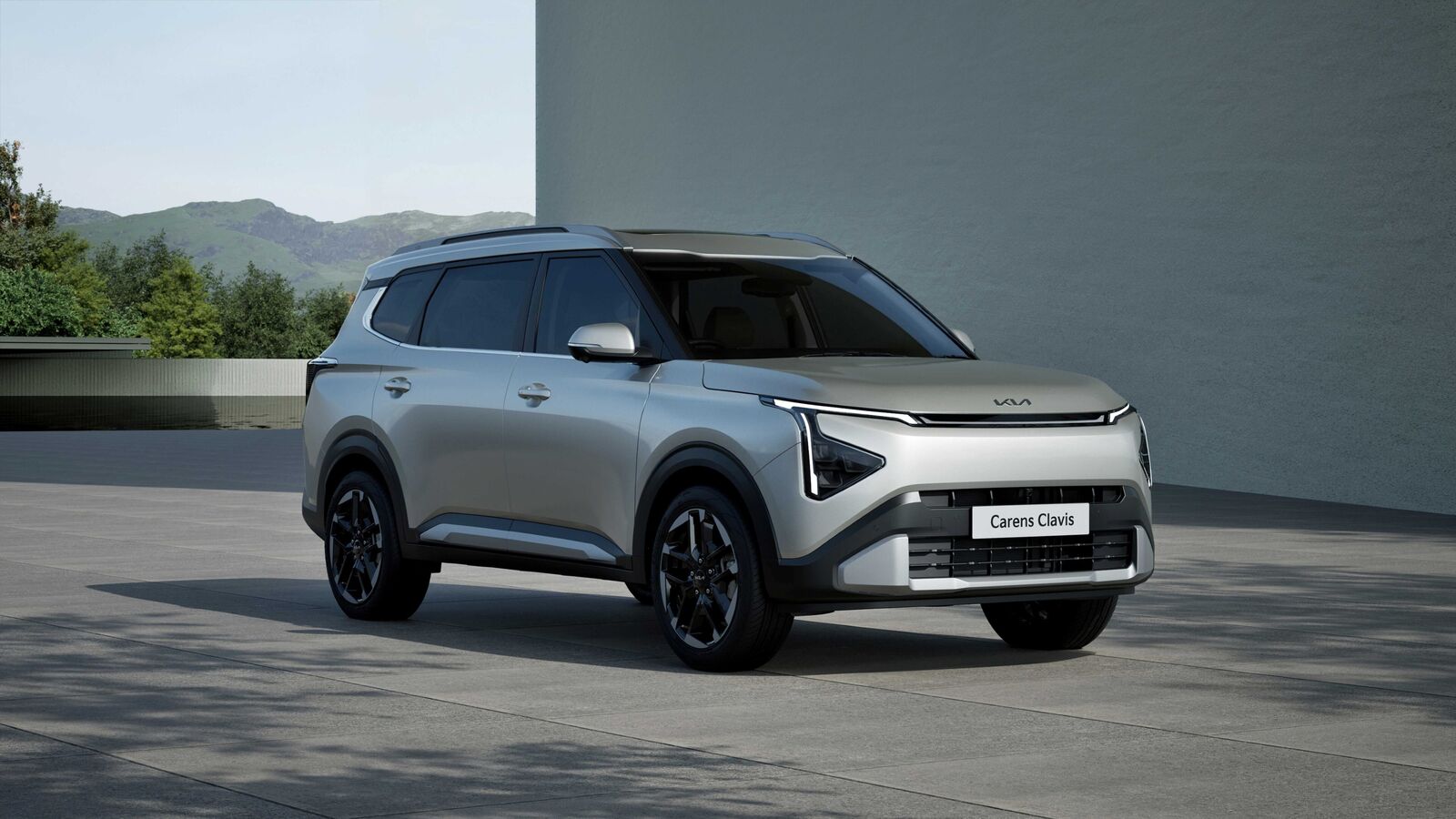08 October 2025

Electric vehicle (EV) registrations continued to help Spain’s new-car market shine in September. But there are concerns that an end to incentives could derail growth. Autovista24 web editor James Roberts delves into the data.
Spain’s new-car market recorded a 13th consecutive month of growth in September. According to ANFAC data, the country saw 85,167 registrations. This marked a 16.4% rise, compared with 12 months prior, equating to an increase of 12,023 units.
Between January and September, the country’s market was up 14.8% with 854,612 units registered, based on Autovista24 calculations. This positive momentum is at odds with fellow major European new-car markets, which continue to see monthly fluctuations. In contrast, Spain’s new-car registrations have risen consistently since August 2024, which was the last month of recorded decline.
‘September was the first month since the pandemic in which total sales exceeded the figures for the same period in 2019,’ confirmed Félix García, director of communication and marketing at ANFAC.
‘This is excellent news, further reinforced by the fact that in recent months, the market share of plug-in passenger cars has grown and stabilised at around 20% year to date. These positive figures lead us to expect that total passenger car sales will exceed 1.1 million units by the end of the year,’ he added.
BEV and PHEV share shines
September’s strong new-car market performance was assisted by high demand for electric vehicles (EVs).
Combined, battery-electric vehicles (BEVs) and plug-in hybrid vehicles (PHEVs) accounted for 20,474 registrations according to Autovista24 calculations. This was the fourth-highest total this year, pushing the plug-in market share to 24%. This marked a year-on-year increase of 9.8 percentage points (pp).
In the year to date, EVs held an 18.6% market share, continuing a skyward trend and a 7.8pp improvement. In these nine months, 158,732 new EVs took to Spain’s roads, a 97.9% year-on-year upswing.
For the fifth consecutive month, PHEVs registered triple-digit monthly gains. Based on Autovista24 analysis, registrations of the powertrain totalled 10,365 units in Spain during September, a 155.1% year-on-year surge. This gave the powertrain a 12.2% market share, up from 5.6% a year ago.
This continues a distinct preference for PHEVs among Spanish consumers. The technology has increased its hold on the new-car market throughout 2025. Spanning the first nine months of the year, PHEV deliveries totalled 86,662 units, a new high year-on-year growth of 105.2%.
EV take off
Between January and September, BEVs accounted for 72,069 new registrations in Spain. This was 34,075 units more than in the same period in 2024, Autovista24 calculates. This ensured an 89.7% year-on-year boost. With this, the powertrain established a new market share high of 8.4%, up 3.3pp.
In September, BEVs recorded growth of 59.7% with 10,109 all-electric cars hitting the roads. Reaching a new high for 2025, the powertrain captured a market share of 11.9%, up from 8.7% a year prior.
‘After several years at the bottom of the European rankings, 2025 has been the year of the take-off of electric vehicles in the Spanish market, with a particular acceleration in recent months,’ outlined Ana Azofra, regional head of valuations and insights at Autovista Group. ‘This technology is working very well in Spain, not only in new vehicles but also in used vehicles.’
‘A more accessible product offer, greater variety in terms of brands and prices, increasingly attractive models, expansion of segments, and, of course, government subsidies, via the MOVES plan, are driving demand for EVs,’ concluded Azofra.
Spain’s EV growth on shaky ground?
This year, electrification in Spain has been boosted by the reintroduction of the MOVES III incentive scheme. This fact was underlined in September, as nearly one in four Spanish passenger car sales was either a BEV or a PHEV.
MOVES III is Spain’s national programme to accelerate the transition to sustainable and electric mobility. It is funded by the EU’s NextGenerationEU recovery funds and is managed in collaboration with Spain’s regional governments. The general objective is to provide financial incentives for both EV purchases and the installation of charging infrastructure.
Notably, this tranche of incentives is due to end on 31 December this year. Amid the irresistible uptake of EVs in Spain, there is concern that consumer interest could be derailed by changes to, or a removal of, current incentivisation guidelines.
Raúl Morales, director of communication at automotive employment association Faconauto pointed out that: ‘According to our surveys, 78% of buyers would not consider purchasing an electrified vehicle without these government incentives.
’Regarding the MOVES programs, we are concerned about the lack of visibility and the absence of budget continuity in those regions where funds have already been exhausted. It is worth remembering that without these MOVES programs, we would hardly be talking now about a market penetration of electrified vehicles approaching 25%, as occurred in September,’ Morales commented.
These concerns were echoed by ANFAC. ‘We are concerned that the exhaustion of the budgets of the MOVES III plan in the main autonomous communities will mean a paralysis of the electrified market. Our employment and our economy need this good market momentum to continue, and to be accompanied by support for industrial investment,’ stated García.
Hybrids continue to lead the way
Mirroring Europe’s wider automotive landscape, hybrid powertrains, including both full and mild-hybrid technologies, continued to lead Spain’s new-car market. This was, however, with the powertrain’s third-lowest total of 2025 in the country.
In September, 35,293 new hybrid cars left dealerships in Spain, based on Autovista24 analysis of ANFAC data. This provided an 18% increase year on year, securing a 41.4% share of the overall new-car market. The enduring appeal of this powertrain was underlined by its share growing by 0.5pp year on year.
Between January and September, 354,741 new hybrid models joined Spain’s car parc, a year-on-year increase of 28.1%. This resulted in a market share of 41.5% for the third consecutive month, a 4.3pp uptick year on year.
Spain’s strong electrified landscape
Overshadowing concerns of the removal of EV incentives, Spain’s electrified market returned to strong growth in September, following the traditionally quiet August.
Combining hybrid and EV figures, the total electrified passenger car sector saw year-on-year growth of 38.4%, with 55,767 units registered. This established a 65.5% market share, the second highest of the year. It also marked a 10.4pp year-on-year jump in share.
In the year to date, electrified powertrains commanded 60.1% of Spain’s new-car market, capping a trend of annual incremental increases. This amounted to a considerable 12.1pp improvement on 12 months ago.
ICE prominence slides downhill
Echoing wider European trends, petrol and diesel registrations in Spain continued to fall in September.
Amid electrified powertrain gains, the overall market share of internal-combustion engine (ICE) vehicles fell to a low of 28.9%, Autovista24 calculates. This equated to a year-on-year nosedive of 12pp. September’s outcome was accompanied by the second-lowest sales volume of the year, at 24,571 deliveries.
In September, petrol registrations fell by 14.5%, with 20,082 units delivered, according to Autovista24 calculations. This gave the fuel type a 23.6% share, a drop of 8.5pp year on year.
Across the first nine months of 2025, petrol power controlled 29.4% of Spain’s new-car market, with 250,936 units leaving national forecourts. Crucially, despite considerable increases in electrified registrations, petrol’s market share has proved resilient.
Until December 2024, diesel prevailed as Spain’s third most popular fuel type. This went against the wider European grain. That is no longer the case as a new low was reached in September. The fuel type rounded out the first nine months of 2025 with 47,238 units registered, and a 5.5% market share, down 4.6pp year on year.
In September, diesel achieved just 4,488 registrations, Autovista24 analysis shows. This left the powertrain with a 30.5% decline compared to September 2024. The technology’s market share was 5.3%, a drop of 3.5pp.
Assessing Spain’s new-car market between January and September reveals a significant decline in combined ICE registrations. An 18.1% slide amounted to 298,174 deliveries this year. This was combined with a new market share low of 34.9%, down 14pp.




